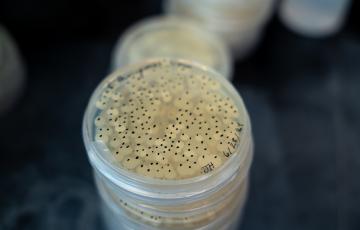IMET scientist discusses the intersection of art and science
Baltimore, MD (January 4, 2018)
IMET Research Scientist, Dr. Kathleen Gillespie, recently featured as a guest on WYPR Radio's Humanities Connection show to discuss the impact of science on her poetry and the finding of poetry in her science.
"Inspiration is a key tool in the arts and in the pursuit of scientific discovery," said Dr. Gillespie. "The ability to communicate science is best accomplished by telling a story that will bring context and to comprehension to a scientific principle."
Over the past 10 years, Dr. Gillespie has volunteered her time to work with Maryland students to help them better understand the complexities of biotechnology and microbiology, as well as aiming to increase overall student engagement in science as a whole.One of the programs she is involved with is the Baltimore Underground Science Space (BUGSS), where she serves as a mentor to students in the iGEM program, which involves a team of students using synthetic biology to try and degrade the plastics littering Baltimore's Inner Harbor. She also participates in Towson University's SciTech program and A Bridge to Academic Excellence (ABAE) which focus on STEM-related learning and mentorship.
"Science is influencing the face of our society on a global scale because of the huge scope of the problems humanity faces--from emerging disease to climate change," she said. "I find that initially children are excited about STEM (science, technology, engineering, and mathematics) but quickly become discouraged because they are not having a good grasp of the science and math concepts. Integrating an art component into STEM through STEAM (science, technology, engineering, arts and mathematics) can open new avenues of creative thought and inspiration that will ultimately bring new perspectives to the students learning STEM disciplines."
In addition to using to art as a catalyst in her own career, Dr. Gillespie is a proponent of replacing the traditional STEM approach with STEAM (adding in Art) as a means to enhance the linkage between science and creative thought and to draw in the interest of new students.


